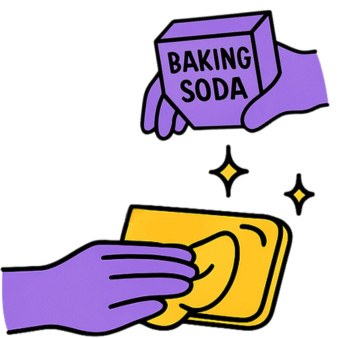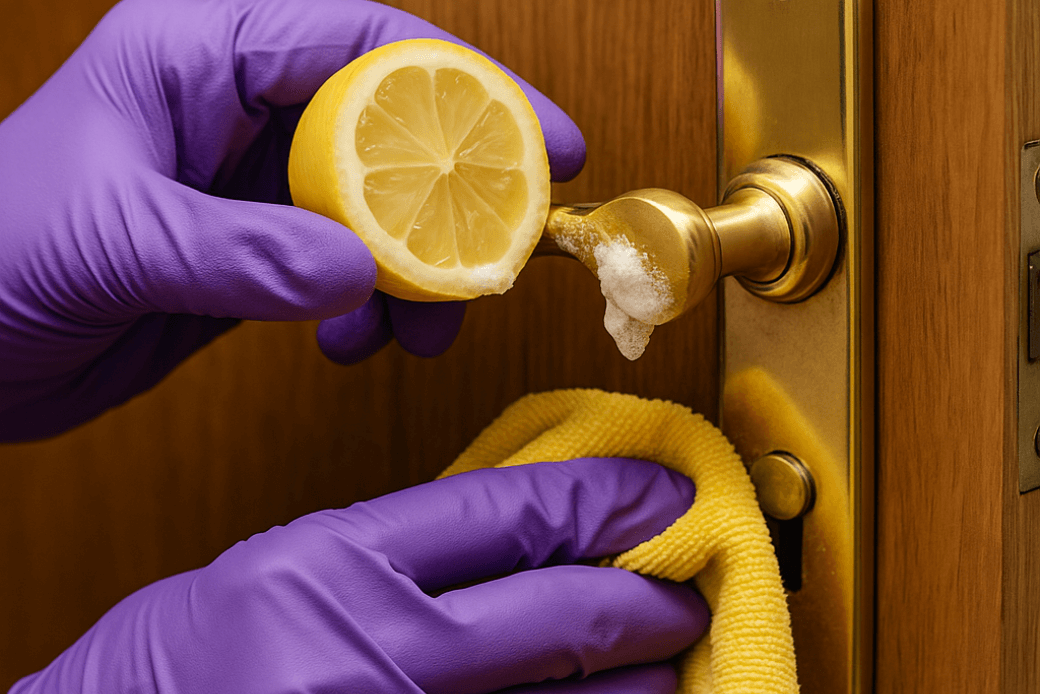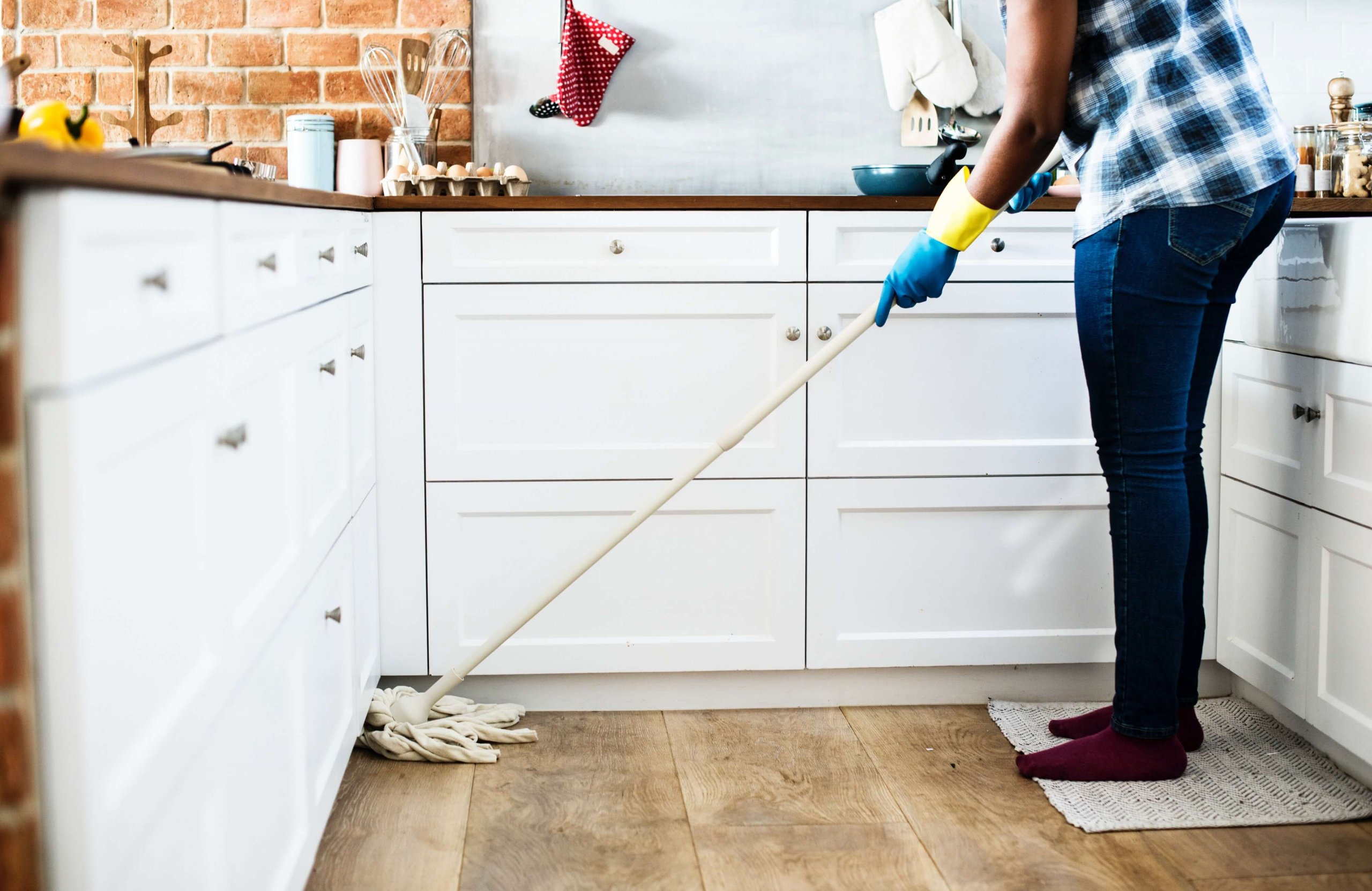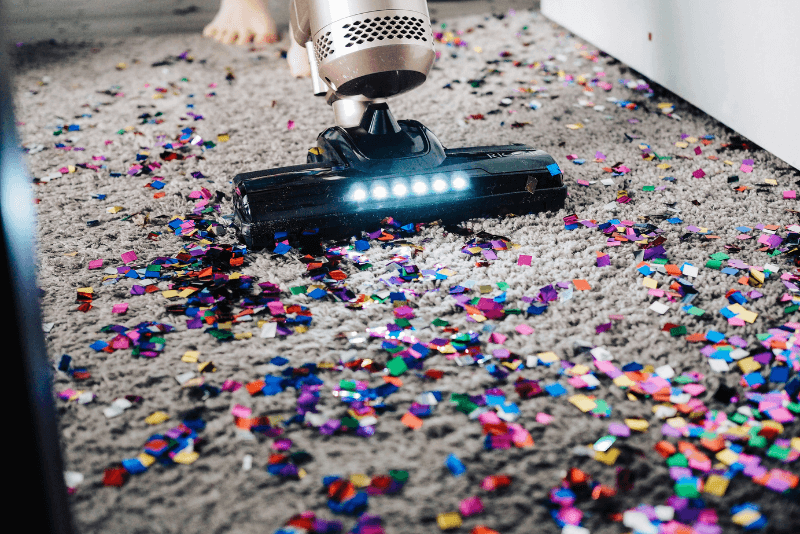How to Clean Brass: Useful DIY Guide
Brass looks gorgeous but it can dull or tarnish from air and moisture. This guide explains how to tell solid vs plated and lacquered vs non-lacquered, then shows safe ways to clean brass with everyday materials or a brass-specific polish.

Before You Begin: Identify Your Brass

- Solid vs plated : Touch with a magnet. If it doesn’t stick, it’s likely solid brass. If it sticks, it’s brass-plated—clean more gently because plating wears faster.
- Lacquered vs non-lacquered: Most household brass is lacquered to slow tarnish. Over years it can still tarnish; to clean deeply you may remove, clean/polish, and re-apply the lacquer. Non-lacquered brass tarnishes faster and responds well to natural, oil-based ingredients.
What You’ll Need
Equipment
- Old toothbrush
- Microfiber cloth
- A bowl
Materials
- Toothpaste
- Kitchen soap
- Baking soda
- Lemon
- All-purpose flour
- Salt
- Vinegar

Brass polishes
- Brasso
- Bar Keepers Friend
- Twinkle Brass & Copper Cleaning Kit
- Wright’s Brass Polish
- Blue Magic

Best Ways to Clean Brass
1) Warm Soap & Water (quick, gentle; safe for lacquered)
- Fill a basin with warm water and a little dish soap.
- Soak briefly.
- Lift marks with a microfiber cloth or soft toothbrush.
- Rinse, dry completely, and buff.
2) Brass Polish (fastest shine on unlacquered)
- Pre-wash with warm soapy water and dry.
- Apply a brass-specific polish as directed.
- Rub gently with a soft cloth (avoid steel wool thicker than 00).
- Buff to finish.
3) Vinegar Methods
Lacquered (paste):
- Mix equal parts flour + salt, then add vinegar to a thick paste.
- Apply with a sponge, cover dark areas, leave 1 hour.
- Rinse, dry, and buff.
Non-lacquered (boil):
- Combine 2 parts white vinegar + ¼ part salt + 2 parts water; bring to a boil.
- Soak the brass, remove carefully, rinse under running water, air-dry.
4) Lemon + Salt
- Salt a lemon half and rub gently over tarnish.
- Buff with a damp cloth, then rinse and dry.
5) Lemon + Baking Soda Paste
- Mix 1 part lemon juice with 1 tsp baking soda.
- Apply with a soft cloth. For thicker tarnish, leave up to 30 minutes (cover with tape), rinse, dry; repeat if needed.
6) Ketchup (non-toxic household option)
- Spread ketchup on the brass, wait ~40 minutes, wash off, dry and buff.
7) Toothpaste (light tarnish only; non-gel)
- Cover with non-gel toothpaste, let it sit, then clean off with a toothbrush (trim bristles for control if needed).

Quick Comparison Table
You will not find brass deposits in nature. This is because its main elements are copper (over 50%) and zinc. During its manufacture these two elements often have tin, lead, aluminum, nickel and manganese added. Depending on the percentage of additives, the alloy acquires different properties and colours. It can be yellow, golden, and even have a greenish tint. Although brass is called the “eternal metal”, it can become darker from contact with water, which is called tarnishing.
| Method | Best for | Key ingredients | Dwell time |
| Soap & water | Light dullness, lacquered | Warm water + dish soap | Short soak |
| Brass polish | Fast shine, unlacquered | Brass-specific polish | Per label |
| Vinegar paste | Lacquered surface clean | Flour + salt + vinegar | ~1 hour |
| Lemon + salt | Spot tarnish | Lemon + salt | Rub, rinse |
| Lemon + baking soda | Heavier tarnish | Lemon + baking soda | Up to 30 min |
| Ketchup | Non-toxic option | Ketchup | ~40 min |
| Toothpaste | Light tarnish | Non-gel toothpaste | Set, then scrub |
Object-Specific Tips
Brass Lamps
Use soft sponges or cotton rags only. Clean with the lemon-salt solution, then rinse with water and mild soap. Wipe fully dry.
Brass Door Handles
- For greenish coating: soak in 10% citric acid until dissolved, wash and polish.
- To reduce reddish plaque: place in 5% ammonium carbonate. For full removal, immerse in 10% vinegar and rinse.

Brass Jewelry
Mix a few drops of mild dish soap in warm water. Test on a hidden spot, clean with a soft cloth or toothbrush, rinse well, dry.
Remove Corrosion (mild, recent)
- Soak in warm soapy water (or a soft ammonia mixture), rinse and dry.
- Wipe with warm vinegar + salt, or a mix of eggs, oil, and water.
- Wash, rinse, dry, then polish with a lemon-oiled cloth.
- For stubborn spots, rub a fresh lemon dipped in table salt; rinse and dry.
Keep Brass from Tarnishing
Brass tarnishes when exposed to oxygen. A clear sealer blocks air contact. Many items are sold pre-sealed; refresh the coating every few years to maintain the shine without frequent polishing.
Polishing & Handling Tips
- Choose polishes made for brass.
- Pre-wash with mild soap and warm water to remove debris.
- Polish gently per the label; the thin protective layer helps slow future tarnish.
- Handle less and use soft cloths to avoid scratches.
For your silver items, you might find our how to clean silver guide useful.
We also suggest reading our helpful guide on how to clean your house like a professional.
FAQs
Mix equal parts vinegar, flour, and salt to form a paste. Apply, leave about an hour, then rinse with warm water, dry, and buff. Lemon with baking soda is another option.
A lemon juice + baking soda paste restores shine effectively. Brass-specific polishes also work well, especially on unlacquered brass.
Use the lemon + baking soda paste gently, allow it to work, then rinse and softly polish to bring back the gloss.
Yes. It can remove tarnish and is used by metal refinishers to help prevent it.
Yes—like other acidic cleaners, it can remove tarnish.





 Blog
Blog

 Previous Post
Previous Post